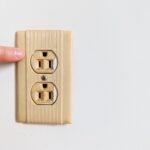In the world of kitchen and bathroom design, the unsung hero is often the humble sink faucet. The way it’s mounted can make all the difference in both functionality and longevity, yet it’s a detail that is frequently overlooked—or even botched. A secure and leak-free faucet showcases not only a sleek appearance but also ensures a hassle-free experience over time. Discover the techniques and tips that can elevate your faucet installation from amateur to professional-grade quality.
- Find out how to ensure stability in sink faucet mounting with the right materials and techniques.
- Learn about common mistakes in faucet stabilization and effective strategies to avoid them.
- Explore key strategies for preventing leaks, including the selection of proper gaskets and washers.
By the end of this article, you’ll be equipped with knowledge and confidence, ready to tackle sink faucet mounting like an expert, avoiding common pitfalls and ensuring your setup stands the test of time.
Ensuring Stability in Sink Faucet Mounting: Techniques and Tips
When it comes to sink faucet mounting, achieving stability is paramount for both functionality and longevity. Selecting the right materials and tools is crucial to ensure a durable installation that stands the test of time.
A well-mounted faucet should remain firmly in place, resisting movement that can lead to leaks or misalignment over time. Using high-quality mounting hardware tailored to your faucet and sink type is the first step towards stabilization. Opt for corrosion-resistant components to maximize durability.
Begin by identifying the appropriate faucet for your sink, considering factors such as the number of mounting holes and countertop thickness. Always follow the manufacturer’s installation guidelines, as they are designed to provide optimal stability.
Additionally, using a wrench or an adjustable basin wrench ensures secure and tight connections, which are essential for preventing unwanted movement. After installation, performing a stability check by gently testing the faucet’s resistance to movement can confirm a successful mount.
Common Mistakes in Faucet Stabilization and How to Avoid Them
During faucet installation, several common mistakes can compromise stability, leading to long-term issues. One frequent error is insufficient tightening of mounting nuts, which can cause the faucet to wobble over time. Ensure these nuts are snugly fitted without overtightening, which may damage the fixture or the sink.
Another typical mistake is neglecting to use a mounting gasket or plumber’s putty when securing the faucet base. This oversight can lead to an improper seal, resulting in movement and water leakage. Always utilize the recommended sealing material to provide a stable and watertight fit.
Occasionally, beginners might neglect to align the faucet correctly with the sink’s mounting holes. Misalignment can cause stress on the connections, resulting in instability. Always double-check the alignment before securing bolts and nuts.
Avoid using substandard or mismatched tools, as they can strip or damage faucet components, undermining stability. Invest in a quality set of tools that fit the specific hardware used in your installation.
By steering clear of these common pitfalls and employing these strategic solutions, you can ensure a robust and stable sink faucet setup.
Preventing Leaks: Key Strategies for Effective Sink Faucet Mounting
Ensuring a leak-free sink faucet installation is crucial for both functionality and longevity. One of the most essential steps in preventing leaks is mastering the art of proper sealing techniques. Begin by thoroughly cleaning the area where the faucet and sink meet, removing any old debris or remnants left from previous installations. This creates a clear surface for your new setup.
The selection of suitable gaskets and washers plays a significant role in leak prevention. High-quality materials like rubber or silicone washers provide an effective seal that withstands wear and tear. Consider using double-layer gaskets for added security against leaks. They offer additional protection by creating a tighter seal when compressed during the installation process.
Applying a consistent amount of plumber’s putty or Teflon tape can further enhance sealing. Teflon tape is particularly beneficial for the threads of faucet connections, ensuring that all joints are snug and resistant to water seepage.
A crucial step often overlooked is regularly checking and tightening the connections after a few weeks of use. With water pressure and constant use, fixtures may slightly loosen, compromising the seal’s integrity. Regular maintenance helps catch these issues early, ensuring your faucet remains leak-free.
Moreover, always inspect for any signs of moisture or mild leaks during routine checks. Early detection can prevent larger problems such as mold growth or structural damage in both kitchen and bathroom faucets.
By implementing these strategies, you can maintain a durable and reliable setup. Whether you’re working on a bathroom sink installation or upgrading a kitchen faucet, ensuring leak prevention will provide peace of mind and enhance the efficiency of your space.
Frequently Asked Questions: Sink Faucet Mounting
What tools are essential for sink faucet mounting?
Basic tools include a basin wrench, adjustable wrench, plumber’s tape, and a screwdriver for secure installation.
How do I ensure a stable faucet installation?
Use the correct mounting nuts and washers, make sure to tighten them adequately, and ensure the surface is clean.
What are common causes of faucet leaks?
Leaks often result from improper sealing, worn-out gaskets, or loose connections.
How can I prevent leaks around my faucet?
Use plumber’s tape on threads, choose high-quality gaskets, and ensure all connections are tight.
What should I avoid during faucet installation?
Avoid over-tightening bolts, using incompatible gaskets, and not checking for surface alignment.
How often should I check my faucet for stability and leaks?
Inspect your faucet every few months to catch potential issues before they cause significant problems.





